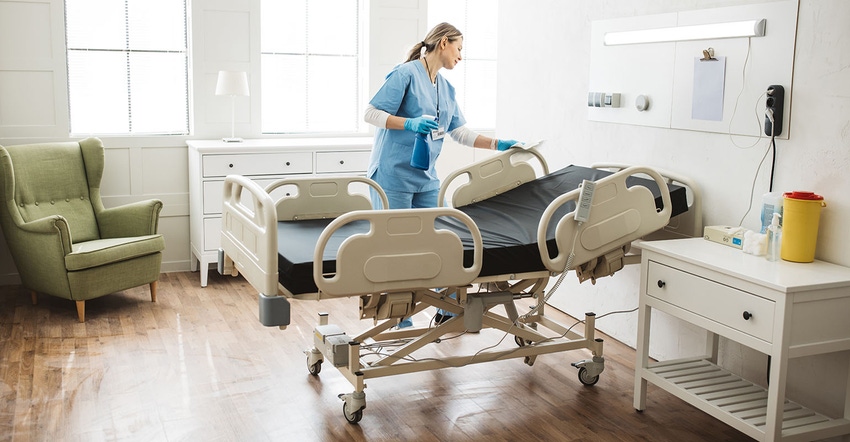Researchers found that coating ABS polymer with chlorhexidine kills microbes responsible for a range of illnesses, including COVID-19, in medical settings.
May 11, 2023

A disinfectant commonly used by dentists to treat mouth infections and to perform pre-surgical cleaning has been shown to be effective in killing bacteria and viruses on plastic medical equipment. By coating acrylonitrile butadiene styrene (ABS) polymer with the chlorhexidine disinfectant, scientists at the UK University of Nottingham’s School of Pharmacy found that it killed microbes responsible for a range of infections and illnesses, including MRSA and COVID-19. A paper published in Nano Select posits that it could be used as an antimicrobial coating on a range of plastic products.
Microbes can survive on plastic surfaces for months
Plastics are widely used in medical settings, where some microbial species thrive despite enhanced cleaning regimes, notes an article describing the research on the University of Nottingham website. These microorganisms can survive and remain infectious on abiotic surfaces, including plastic surfaces, for several months. It’s not uncommon for patients to become infected while in the hospital and be required to take antibiotics to combat the infection.
The researchers bonded the disinfectant with the ABS polymer to create a new coating material. They discovered that it acts very quickly, killing bacteria within 30 minutes, without spreading into the environment or leaching from the surface when touched. Making plastic items using this material could really help tackle the issue of antibiotic resistance and reduce hospital-acquired infections, according to the article.
Material rapidly kills microbes
“The researchers used a special imaging technique called Time-of-Flight Secondary Ion Mass Spectrometry (TOF-SIMS) to examine the material at molecular level, explained Dr Felicity de Cogan, assistant professor in pharmaceutical science of biological medicines. “This revealed the material was antimicrobial and rapidly killed microbes; after 45 minutes, the surfaces were still clear of these microbes. It was also effective against SARS-COV-2, with no viable [virus particle] found after 30 minutes. Additionally, the surfaces were also effective in killing chlorhexidine-resistant strains of bacteria,” said de Cogan.
It has been estimated that 20% of all patients hospitalized with COVID-19 contracted the virus while in the hospital. Moreover, in 2016-2017, it’s estimated that 4.7% of adult hospital inpatients contracted an infection while in the hospital, with 22,800 of them dying because of these infections, despite the deaths being preventable.
Preventing spread of antimicrobial resistance
“Research has shown that contaminated surfaces, including plastic surfaces, can act as a reservoir of antimicrobial resistance genes, encouraging the spread of antimicrobial resistance across bacterial species through horizontal gene transfer despite deep cleaning practices,” commented de Cogan. “It is paramount that new technologies are developed to prevent the spread of pathogenic microorganisms to vulnerable patients and address the ever-increasing threat of antimicrobial resistance.
“This research offers an effective way to do this and the material could be added to plastic materials during manufacture; it could also potentially be used as a spray,” added de Cogan.
About the Author(s)
You May Also Like




